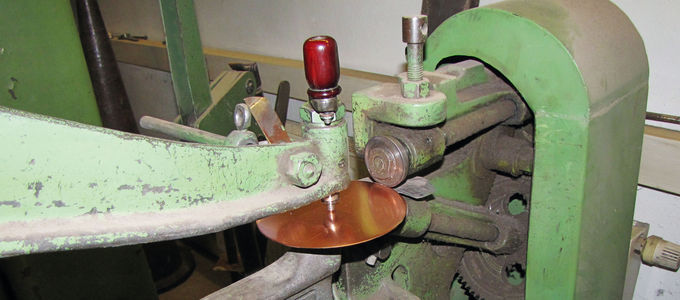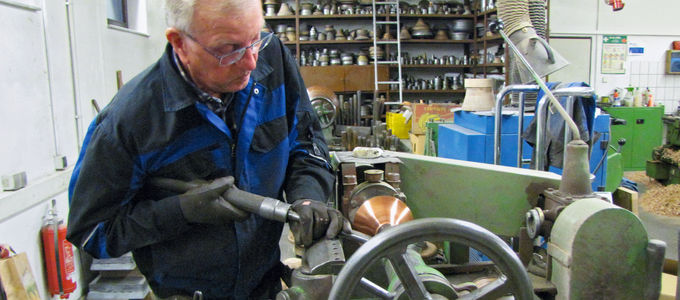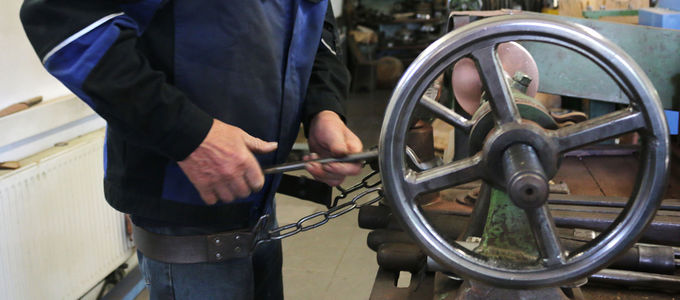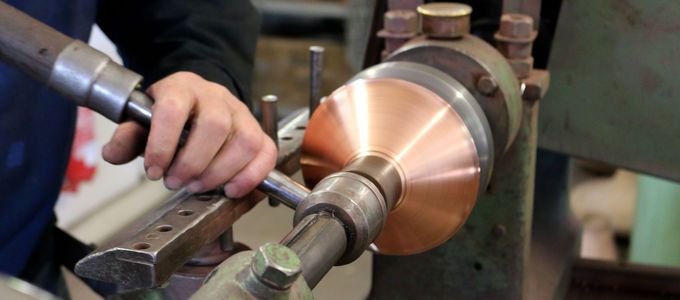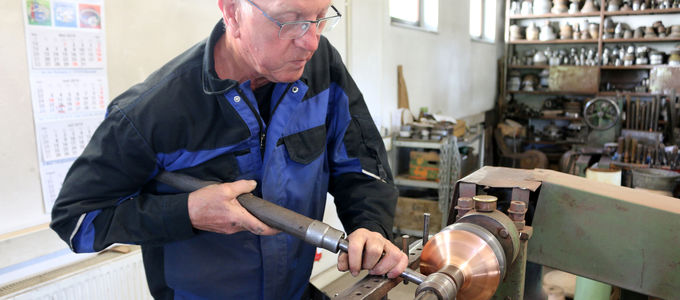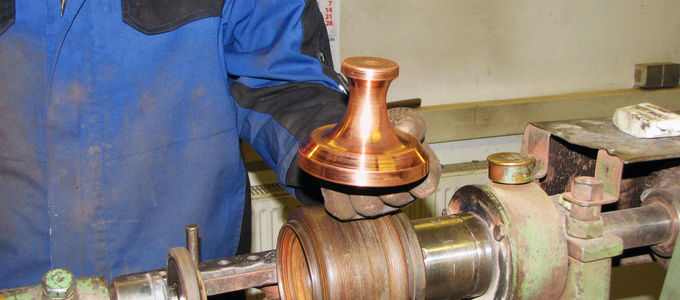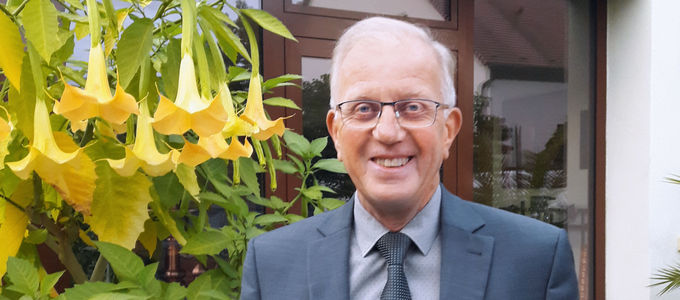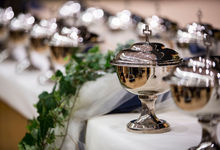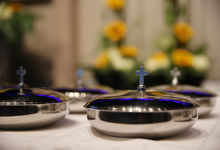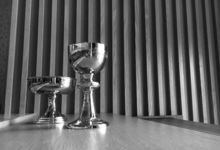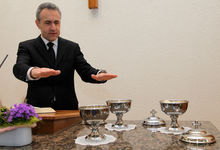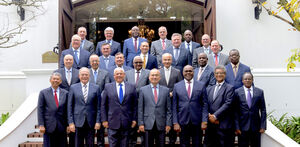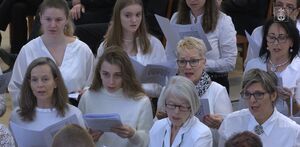Craftsmanship for the table of the Lord
Retired Shepherd Christoph Müller has a very special perspective on the celebration of Holy Communion. This is because many of the chalices containing the wafers originate from the workshop of the master metalworker.
Anyone who has ever set foot into the workshop in the Saxon town of Wurzen, Germany will quickly get a feel for how complex this job really is: machines, tools, sheets of metal, and moulded parts are everywhere. Only the most imaginative of people would ever guess that communion chalices could be made from these materials. But all it takes are a few expert moves by Shepherd Müller, and things begin to look very different indeed.
Taken over from his father
It all started in 1953 when his father, Kurt Müller, started his own enterprise. The first workshop was a former horse stable, which was only replaced by a new building in 1996. In an economy that was being increasingly nationalised in the then German Democratic Republic—and when chronic material shortages were the norm—things were especially difficult for independent businesses. But the Müllers held their ground and, during this period, also began crafting communion vessels for the Church. Christoph Müller carried on this tradition when he took over his father’s workshop in 1990.
Anyone who has ever attended divine services in different congregations of the New Apostolic Church will have noticed that communion chalices come in many different shapes and are even made of different materials. Christoph Müller has developed his own standard model.
Buckle up—and not just for safety
In order to get the communion chalices into the right shape, the steel shaping die and the copper sheet are clamped into a kind of press known as a spinning lathe. The latter rotates at a speed of 1,400 revolutions per minute. What happens next is reminiscent of the work of a potter. With the help of the machine, Shepherd Müller presses the sheet over the shaping die.
But before he gets down to work, he does the same thing people do when they get into an automobile: he straps on a safety belt that connects him to the machine. “I need this to help me transfer my strength,” he explains. This is because metal spinning is a strenuous craft. Christoph Müller has to apply all of his weight and strength to counteract the forces in play.
Because Christoph Müller uses copper for his chalices, they are red during the production phase. They only take on their silver colouring through the galvanisation process. This procedure involves a dip into a nickel bath. Now the only thing that is still missing is the cross on the lid.
The client base
The company delivers up to 50 chalices each year to congregations of the New Apostolic Church. Not only does it deliver within Germany, but also to other European countries and even as far as Australia.
Christoph Müller’s company also delivers communion chalices to other denominations, however. Depending on the customer's requirements, these are usually custom-made products with special shapes and metals.
In addition to chalices, Christoph Müller also produces other sacred vessels, for example, baptismal bowls. The company could not survive from the production of such items alone, however. The majority of the company’s orders call for the production of decorative parts for buildings, such as church spires, roof vents and turrets, weather vanes, and even ornaments for town halls and community centres. The Müller family has even been recognised for their work with a prize that is renowned throughout Europe.
A family that works together
His wife Johanna works together with him in the Müller family enterprise. After all, there are many other tasks in addition to the actual production aspect, for example, calculations, accounting, and shipping.
Thomas Müller, the oldest son of the family, has also learned the metalworking trade and, beyond that, specialises in the restoration of both secular and sacred objects. He operates a workshop of his own in the Black Forest, where he lives with his family. Nevertheless, father and son still work together on larger orders.
A holy task
As a minister, Christoph Müller held the chalice in his hands on countless occasions as he distributed wafers for Holy Communion. In 1990 he became rector of the congregation of Grimma. Up until his retirement in the year 2017 he also served as rector for his home congregation of Wurzen.
Since his retirement, Shepherd Müller no longer distributes wafers, but the awareness of this special moment has remained. “Once the body and blood of Christ are joined to the elements, they comprise something very special. I simply find it a beautiful task to produce the vessels that are used during Holy Communion.”



